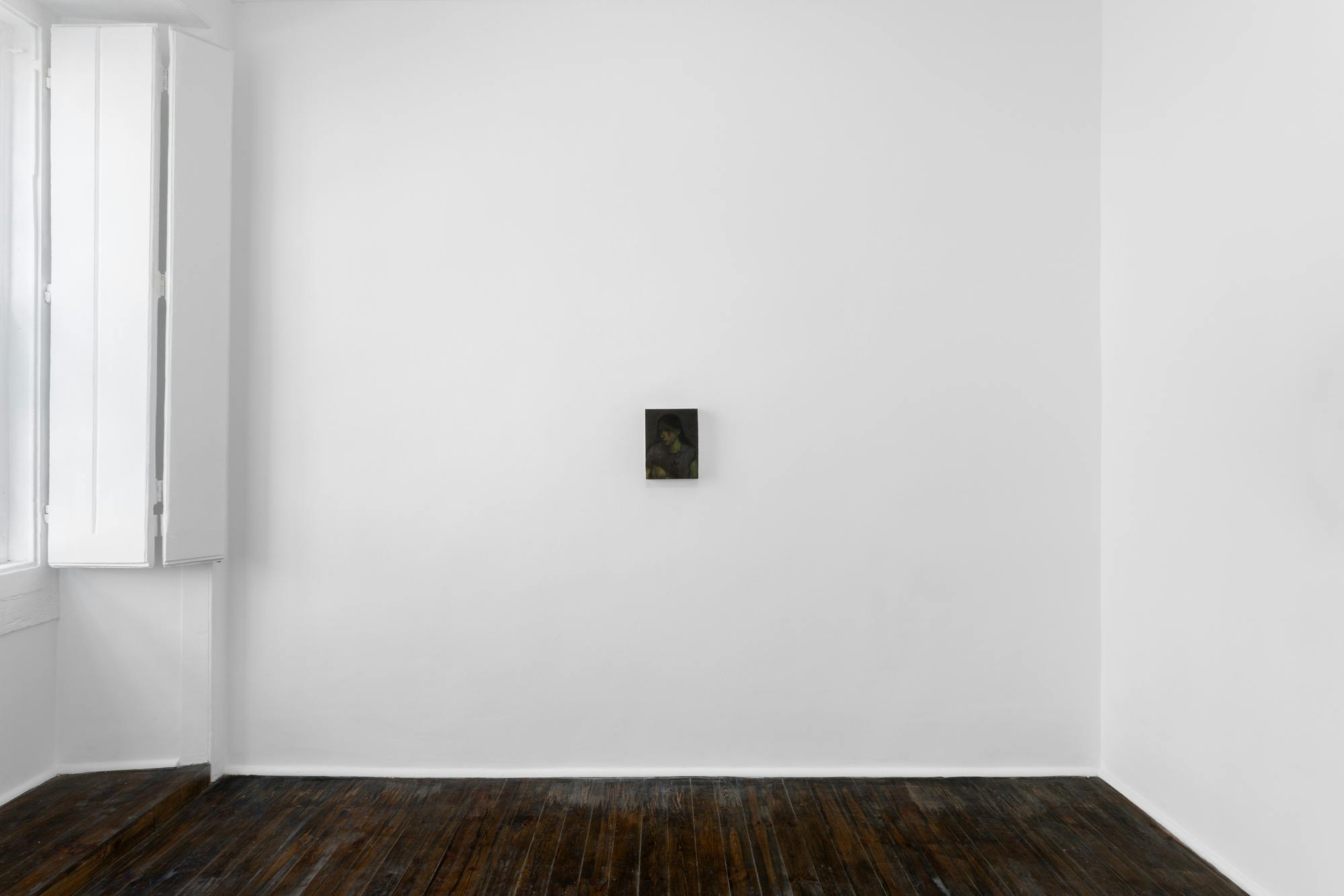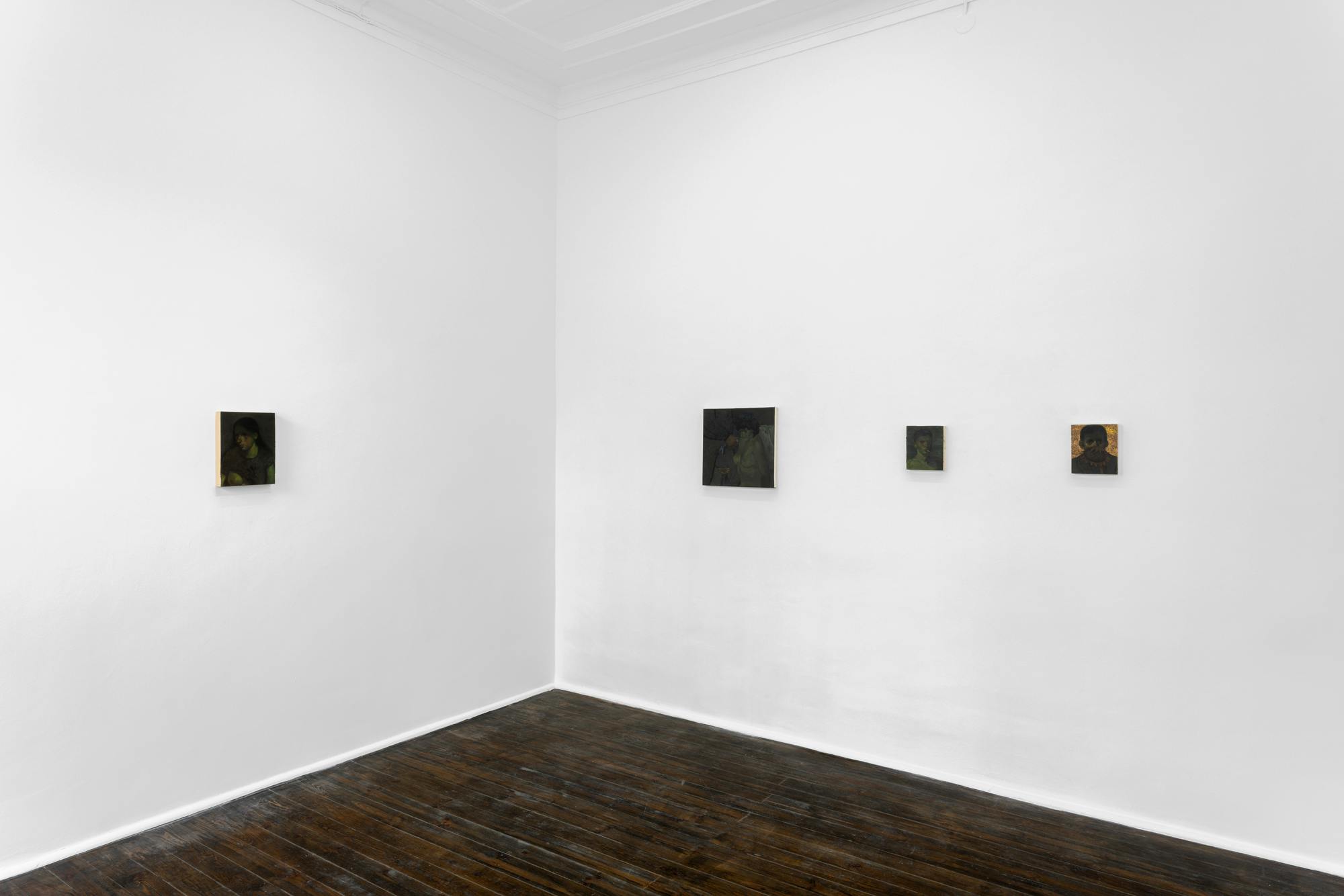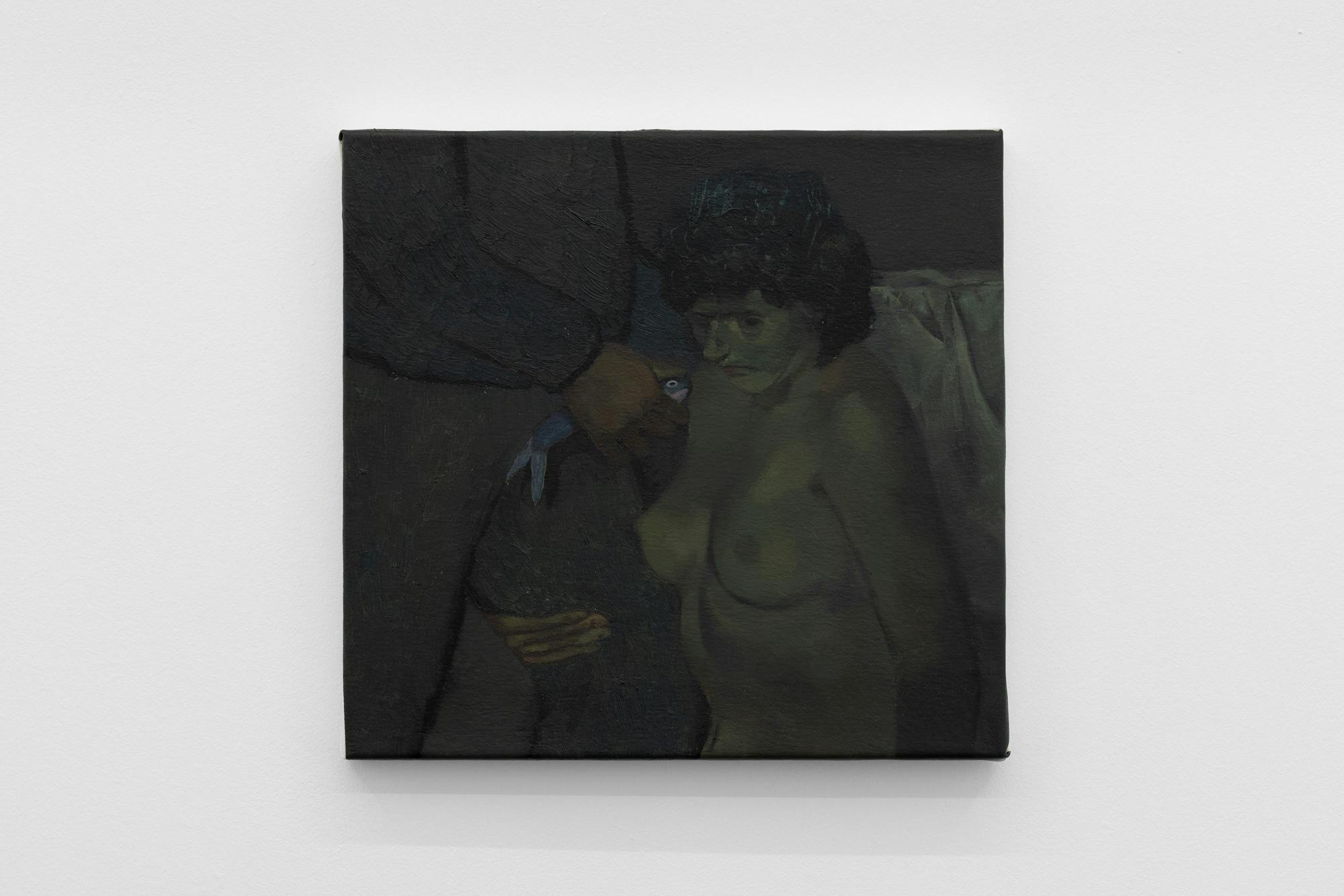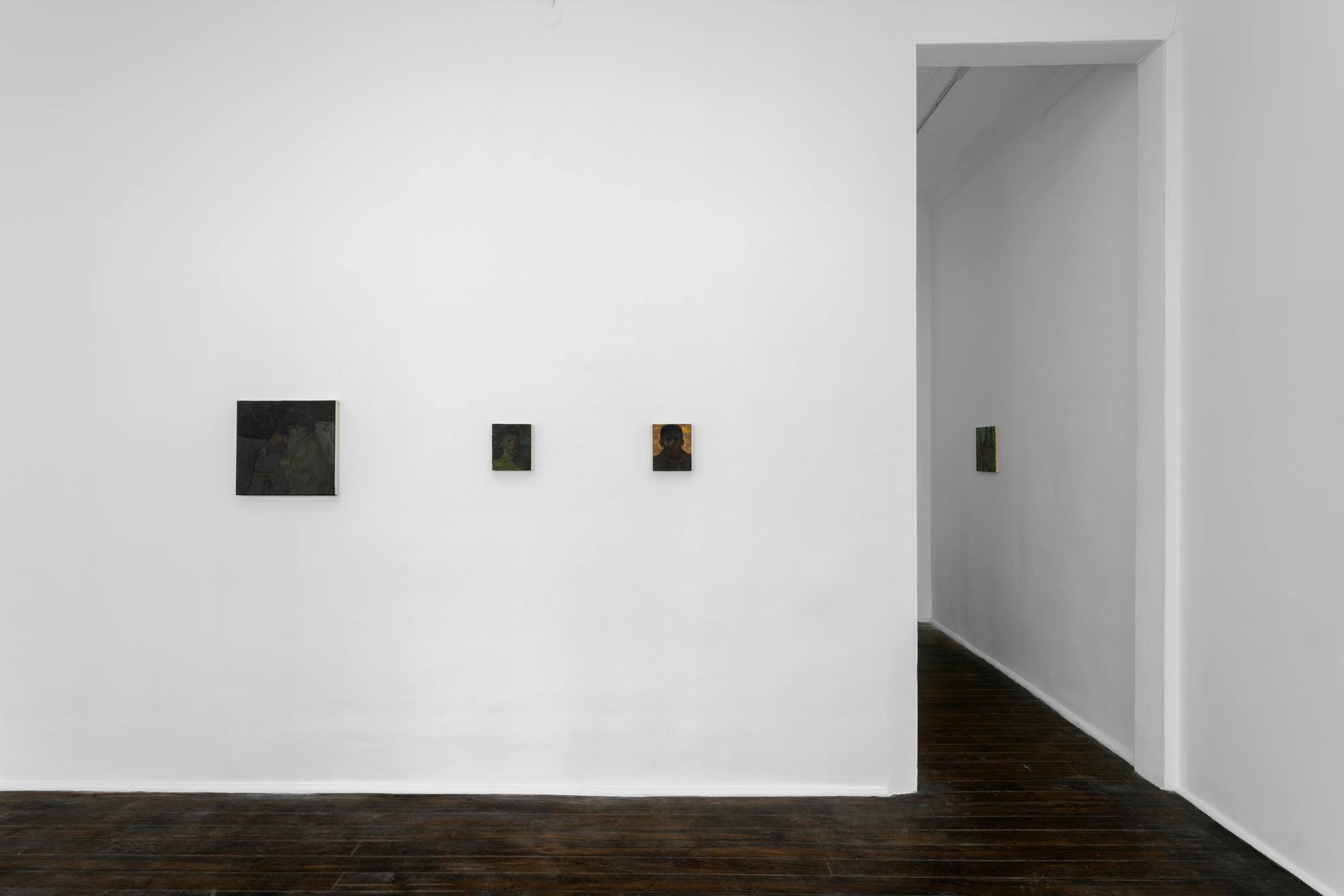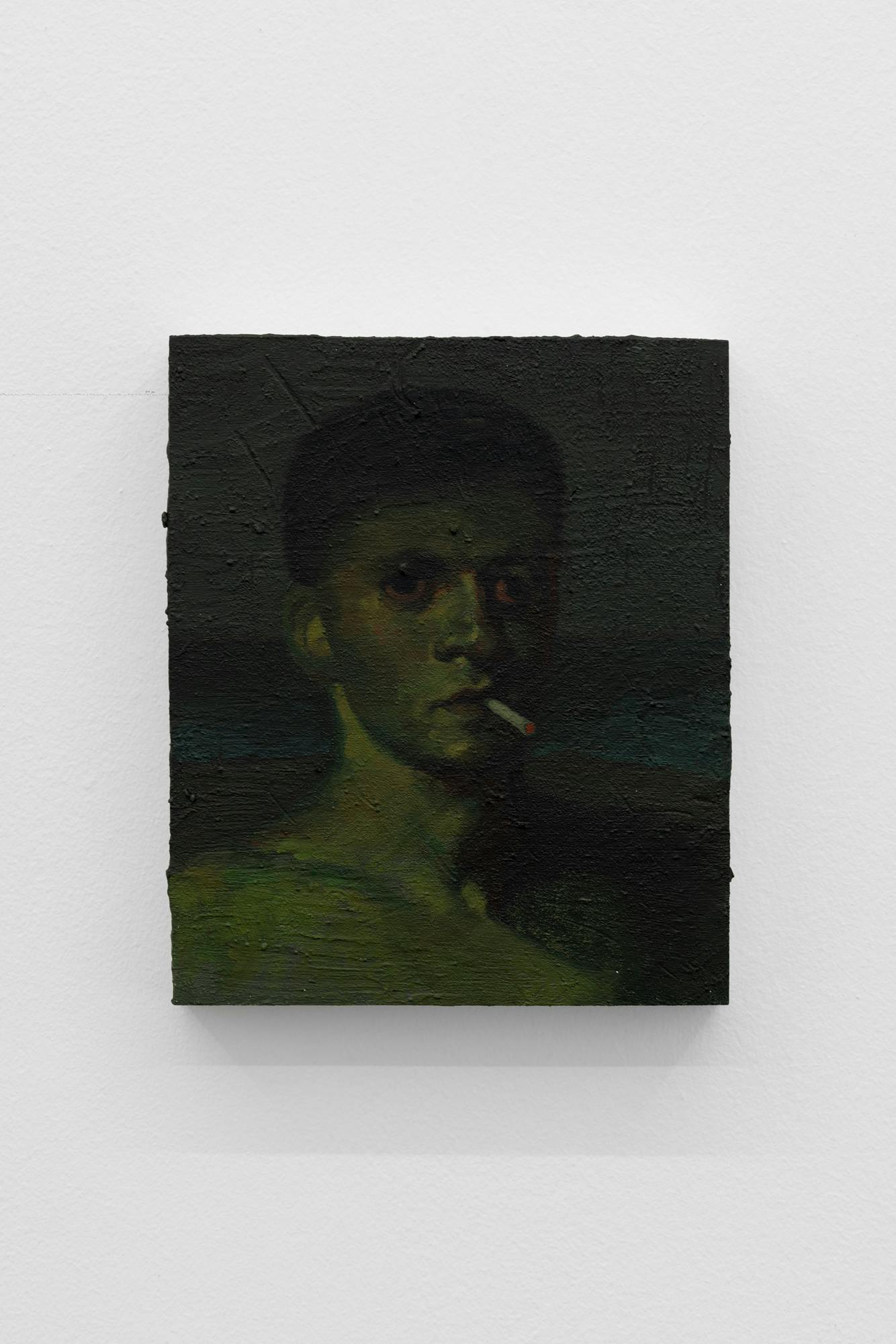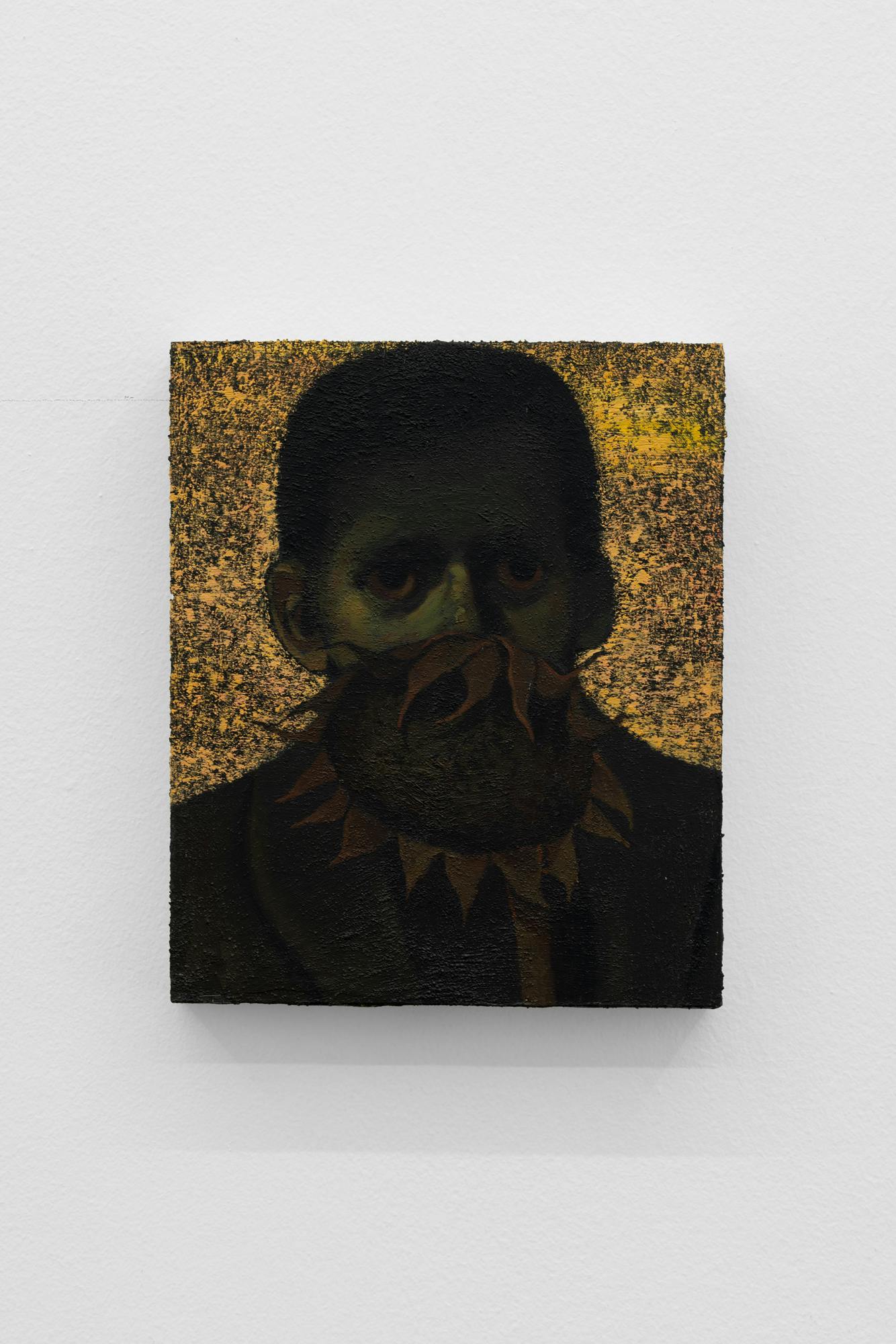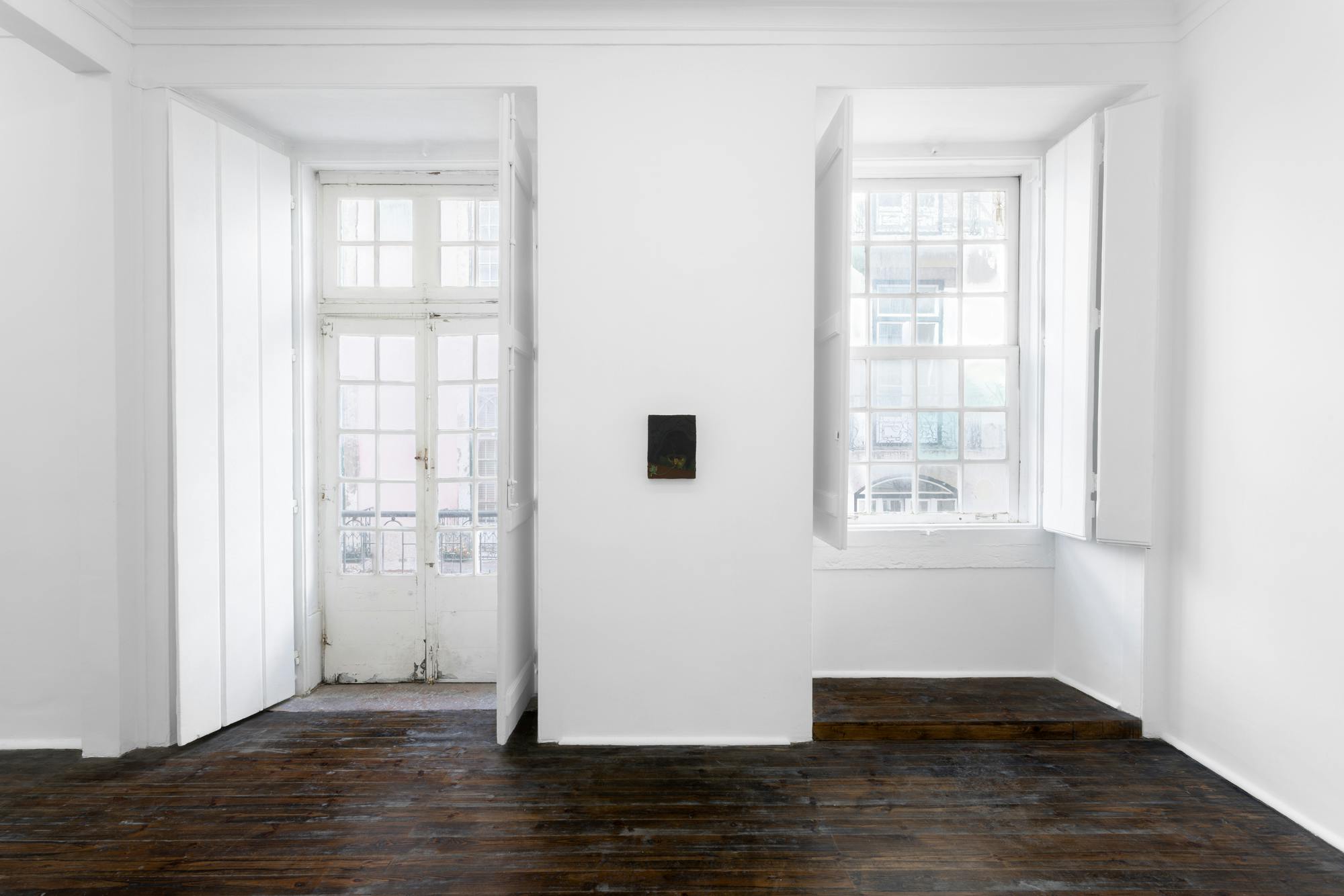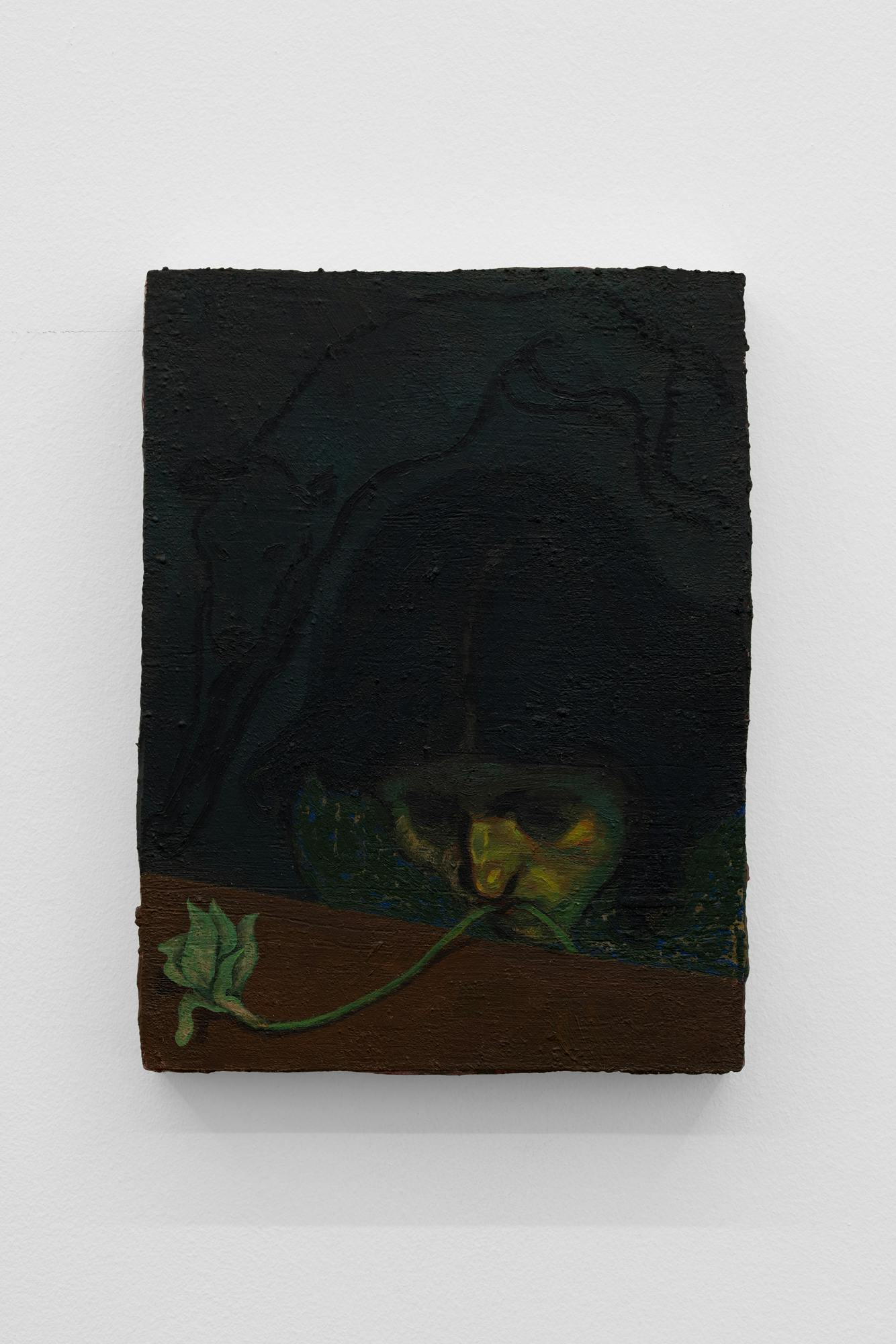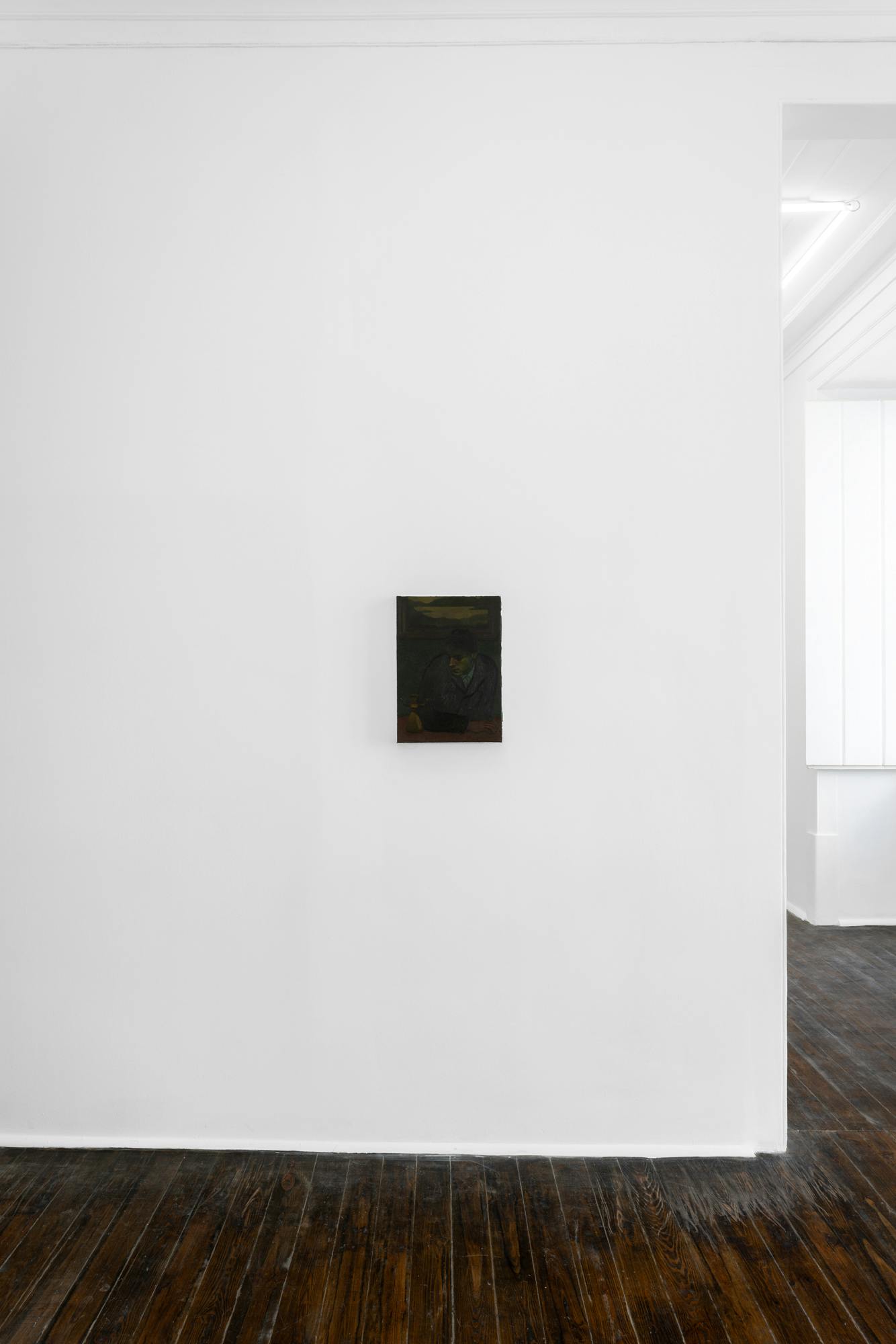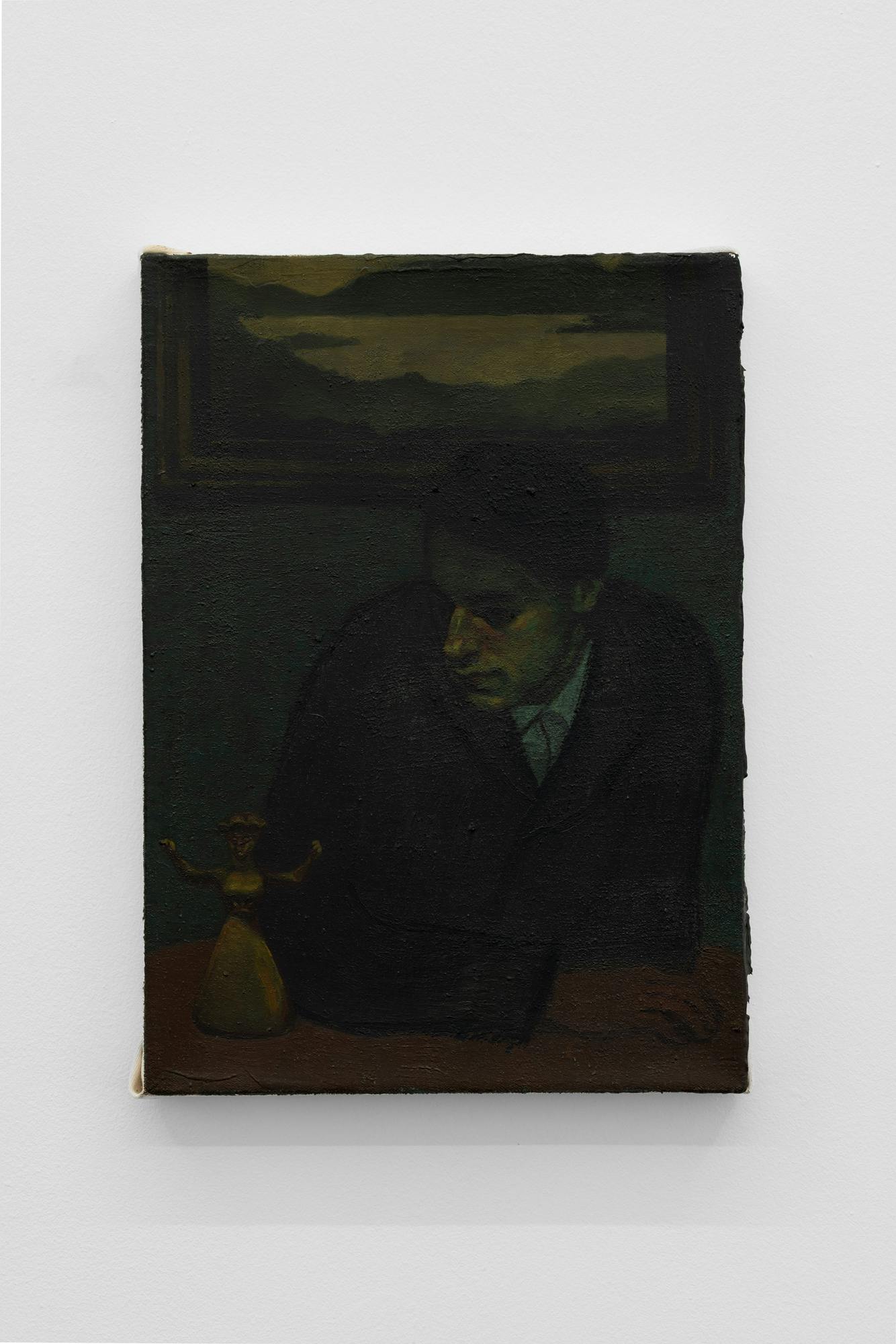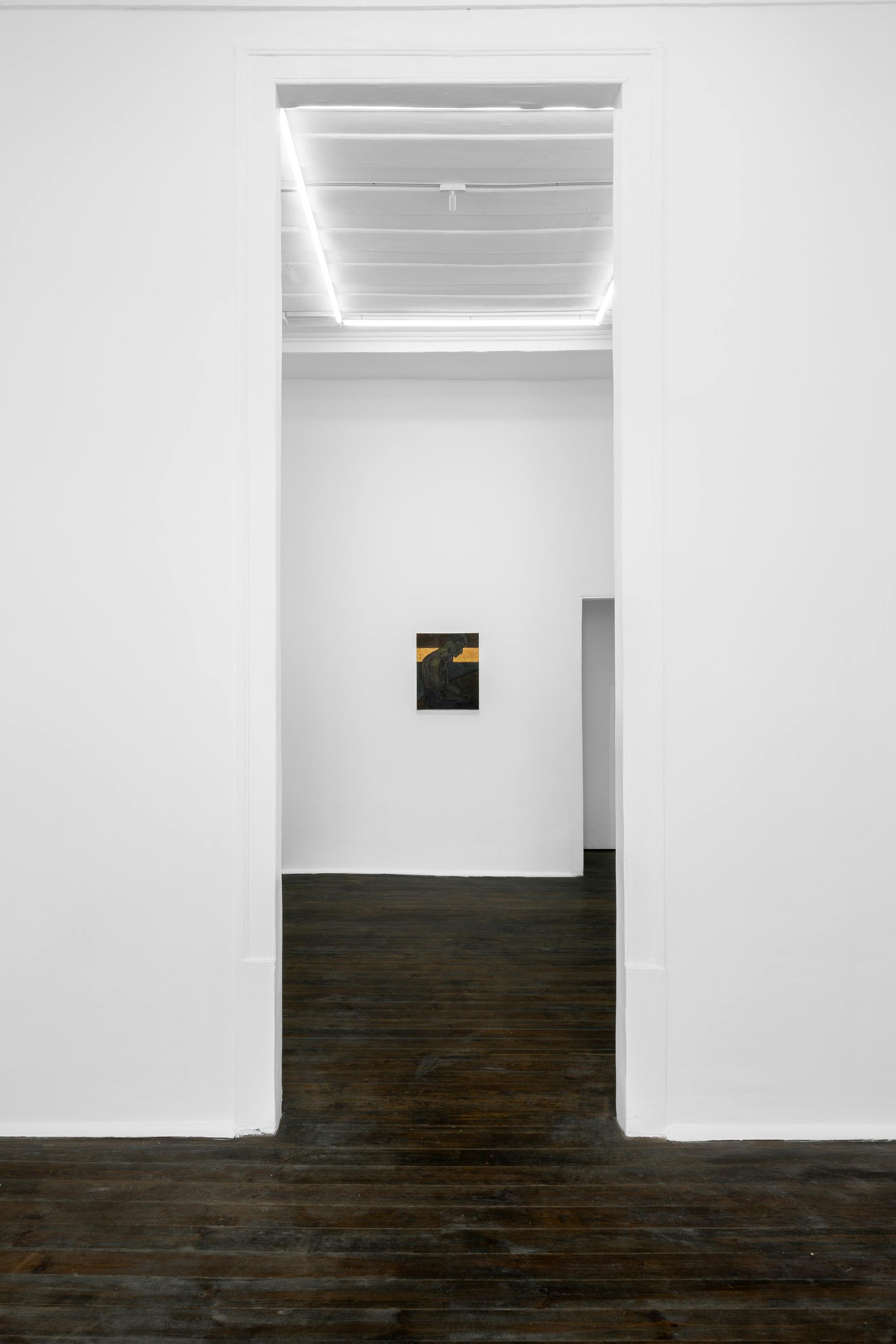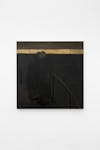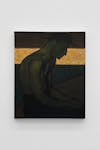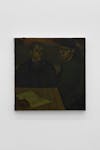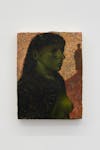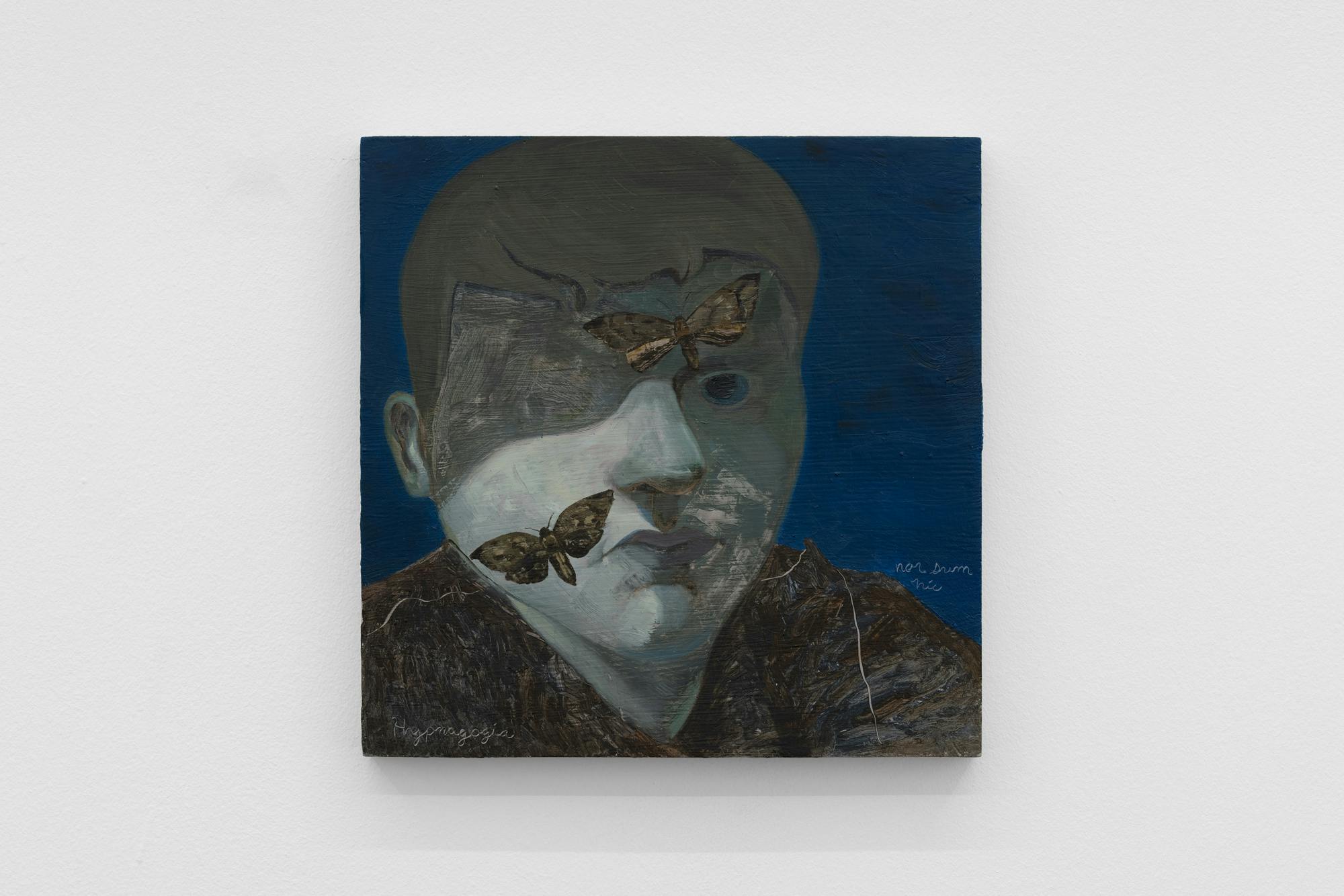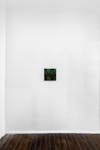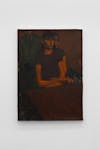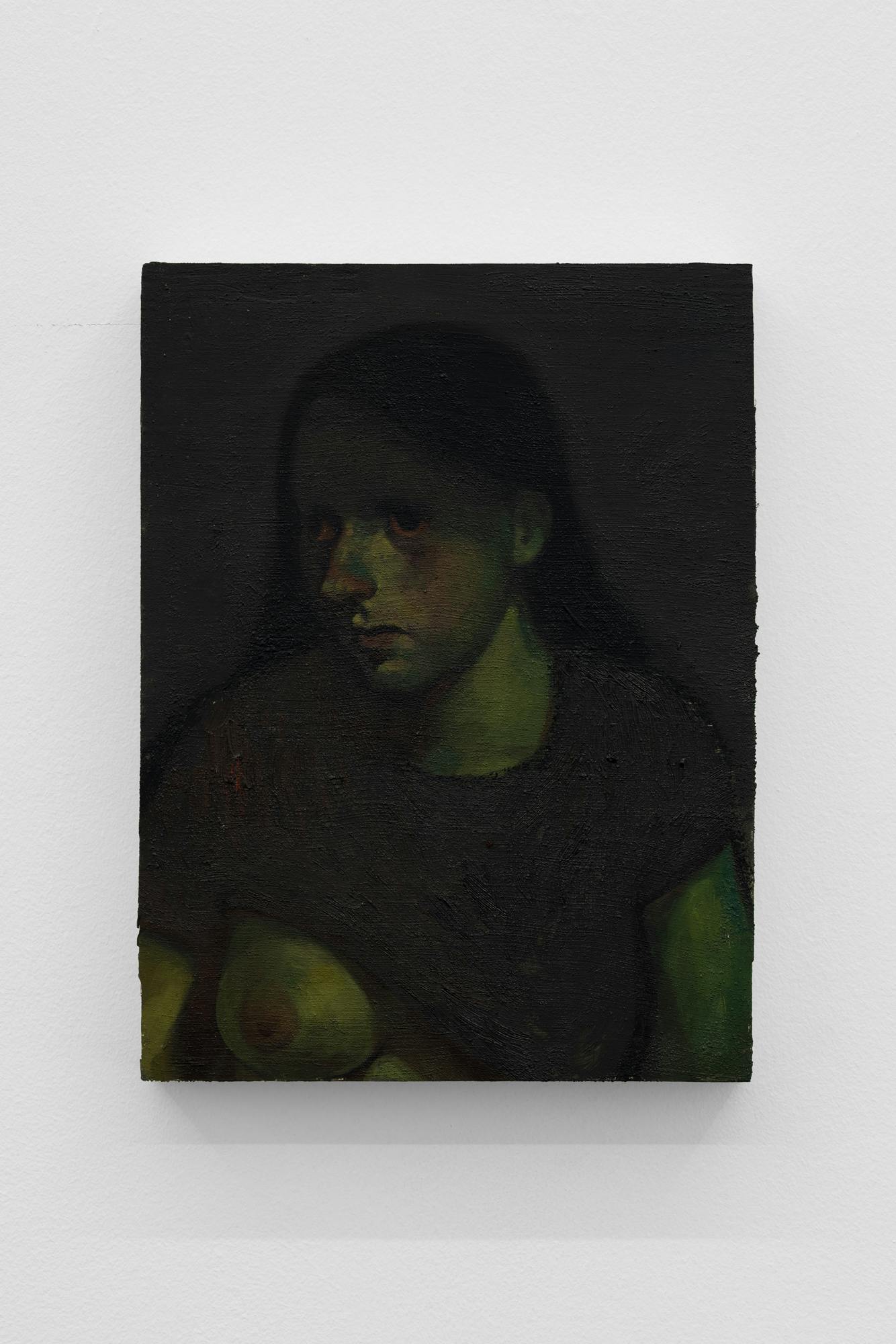
In celebration of a decade of PPP, the gallery presents Alessandra Acierno’s, "Nocturne".
Acierno’s compositions unfold as dark, ambiguous tableau. Often centering on one or multiple figures, the artist constructs cryptic compositions, lending an atmosphere of the allegorical whilst withholding allegory. Cloaked in petrol blues, bottle greens, and bruised vermillions, each painting seems to precede a pointed moment of encounter, with compositions that are both static yet shifting, charged with anticipatory unease. The resultant images are loaded with absurdist tension, disquieting posture, and a web of dispassionate, unseeing gazes that quietly implicate the viewer.
Drawn to tensions and oppositions – that of eroticism and repulsion, intimacy and disgust, wakefulness and dreaming – Acierno gravitates towards references that capture an indefiniteness of experience, recalling morally ambiguous characters such as the Magistrate in Coetzee’s Waiting for the Barbarians, or Meursault in Camus’ The Stranger. Ambiguity as mode dictates the artist’s compositions: in works such as Exodus or Origin, Gustave Courbet's familiar composition L’Origine du monde is recalled yet complicated, with a dusky, Mannian palette enshrouding a simultaneously erotic and clinical scene. Similarly, Fish-food substitutes a coercive gesture with an incongruous symbol – a limp, proffered fish – in a distinctly absurdist mode. Enshrouded in an all-encompassing, obfuscating palette, tension lingers in the frictive space of incompatible elements coexisting.
Whilst Acierno’s language is visual, her sensibility is deeply literary. Kafka’s shifting metamorphoses, Camus’ estranged antiheroes, and Coetzee’s morally entangled figures cast long shadows across the works. The work of , too, which is distinctly narrative, emerges as a presiding spirit in his ability to summon an atmosphere of innocence and corruption simultaneously, to make the viewer complicit simply by looking.
The slippery logic of dreams plays out across many of the works. In Leaving the House, Followed, two figures run from an unknown pursuer: one hunched, glancing furtively backwards; the other bare-breasted, arms held aloft in a gesture of refusal, or despair. Behind them, a house looms, penitential. The space between figures and house feels elastic: at once near and impossibly far, evoking a surreal geography where distance escapes comprehension. Similarly, in Night Walk – a work which recalls ’s long horizons and girdled shorelines – a small cigarette gleams in the half-light, shining with sourceless, symbolic weight. In both compositions, a surreal organisational logic recalls the shifting spatial logic of dreams, whilst implying moral uncertainty and unreliable narration. The scenes encountered here are at once brutal and delicate, fleeting and weighted.
Acierno’s process itself mirrors this atmosphere of obscurity and slippage. The artist begins with sketches which evolve into painted compositions, bringing each to near-completion before working across several paintings at once. At this stage, each work helps and informs one another to create a chorus of shifting resonances, like dissonant vignettes in the same novel.
The politics and psychology of the gaze – its intimacy, its power, its shame – permeate the exhibition. In works such as The Suitor, Clarissa in the Afternoon, and Lydia’s Lover, a web of sightlines – those met, avoided, and shied from – suggests a murky morality that seeps from the edges of the works. Much like Balthus’ seminal work , Acierno’s paintings suggest that the act of looking is never neutral, implicating the viewer as a central, moralising participant to the works. Similarly, leadened stares and avoidant glances recall Sartre’s thought on shame and exposure. And I a Smiling Woman presents a woman with her breast bared, with a towering, shadowed figure’s impending presence overlooking. Here, the artist explores the inherent, psychological exposure of the act of painting.
Like eyes adjusting to details in darkness, the more that emerges in Acierno’s compositions, the more certainty withdraws.
Written by Lydia Earthy
References
1
2
3
4
5
6
7
